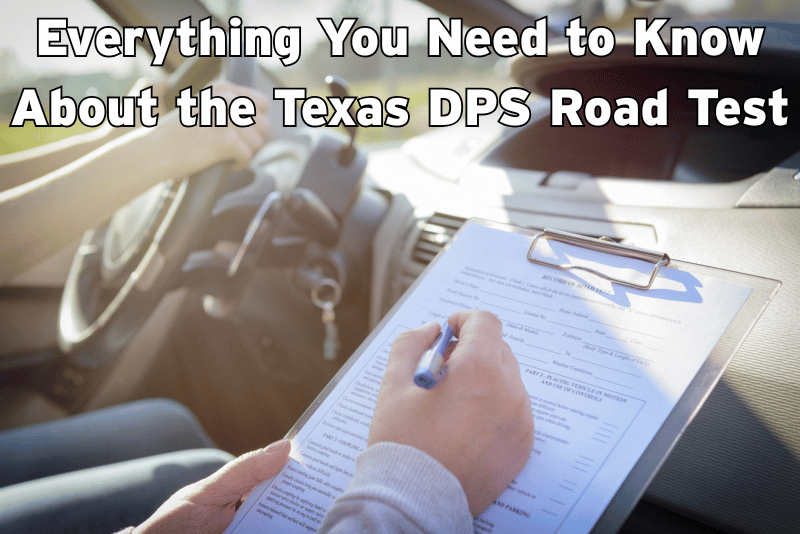Everything You Need to Know About the Texas DPS Road Test
- Alex Niall
- Jul 22
- 4 min read
The Texas DPS road test is a critical step toward earning your driver’s license. Whether you’re a teen earning independence or an adult switching to solo driving, passing the test marks a major achievement. But it can also bring nerves and uncertainty. At SafeWay Driving, we’re here to guide you through the process with confidence, providing expert strategies and insight.
Below, you’ll find everything you need to know about the Texas DPS road test, from test components, common mistakes, preparation tips, and why taking a few professional lessons can make a difference.

Skip the DPS - SafeWay Driving Offers DPS Authorized Road Tests
SafeWay Driving offers the DPS-authorized road test also known as the Third Party Skills Test. Skip the lines, complexity, and stress of taking your test at the DPS by taking the test in SafeWay’s vehicles with one of our instructors.
Understanding the Road Test: What to Expect on Test Day
Before arriving at the DPS testing center, it’s important to know exactly what the examiner will evaluate.
Maneuvers You’ll Be Tested On
During the test, you’ll perform several key maneuvers:
Parking maneuvers (parallel, angle, or perpendicular)
Three-point turn
Left and right turns
Lane changes and merging
Proper stopping at signs and lights
Smooth acceleration and braking
Examiners observe your decision-making, vehicle control, and ability to spot and react to hazards. According to Texas DPS guidance, single small mistakes don’t fail you, but consistent errors or unsafe or illegal actions will.
Real-World Driving Situations
After the basics are checked, you’ll navigate real traffic. This often includes residential streets and may include highway merging or busy intersections, depending on the location. Your responsibility during the road test isn’t just avoiding crashes; it’s also demonstrating awareness and safe driving habits.
Common Mistakes That Cost Testers the License
There’s a difference between driving poorly under nerves and projecting unsafe behavior. Avoid these red flags:
Major Errors
Failure to yield
Straddling lanes or not signalling
Rolling stops
Dangerous merging or turning
These are considered dangerous and result in automatic failure.
Accumulated Minor Errors
A few minor errors like mirror-check misses or improper lane positioning won’t fail you alone, but too many in a row could. The examiner looks for consistency in safe driving habits.
How to Prepare: Practice Smarter, Not Harder
Preparation isn’t just about racking up hours behind the wheel. It’s targeted practice that builds muscle memory and confidence.
Structured Practice Sessions
During parent-supervised driving sessions, focus on one or two maneuvers per session. For example, dedicate a session to mastering parallel parking by repeating it in multiple spaces. Then move on once your teen consistently completes it smoothly.
Join a Professional Road Test Prep
Taking a session or two with a professional driving school offers benefits:
Dual-control vehicles provide safety backup
Instructors offer drills and feedback that match DPS expectations
Experienced instructors preview potential trouble spots and coach out common nerves
A study from the NHTSA shows that learners who receive professional instruction or professional test preparation have approximately 30-40% better pass rates than those who don’t. That’s not just confidence, it’s results.
Day-of-Test Checklist: Be Prepared, Stay Calm
Make test day smooth with a simple checklist.
What to Bring
Proof of auto insurance and registration.
Valid learner or provisional license
Posted appointment confirmation
Completed driving log (if teen) and driver education certification documents
For a full list of documents, please review our blog about what is needed to get a driver license.
Day-of Routine
Arrive 15-20 minutes early to park and get ready.
Perform a brief vehicle safety check, ensuring that lights, signals, and tires all function as expected.
Breathe deeply and visualise success.
Ask the examiner questions if anything seems unclear. They’re here to help you drive safely.
What Happens After You Pass… Or Don’t
The good news is that if you pass, you’ll receive a temporary paper license at the DPS while your official plastic one is being mailed in 2-4 weeks. Just keep your temporary license until then.
If you don’t pass, don’t worry, it’s not the end. You’ll receive feedback on areas to improve. Texas allows retests after 24 hours, and many people pass on their second try. This time, focus on targeted practice in areas that need improvement, especially the feedback items provided.
Why Driving School Road Test Prep Helps
Our role at SafeWay Driving is to provide you with a tangible advantage when obtaining your license.
Expert Feedback
We’ve seen every common mistake and know how to fix them. Our instructors fine-tune your technique and approach until you’re ready for test-day conditions.
Confidence Under Pressure
Confidence is muscle memory. By simulating test situations in advance, you’ll walk into your exam focused and calm, not rattled or reactive.
Final Thoughts to Drive with Confidence in Texas
Passing the Texas DPS road test signals not just legal eligibility, but also trust in your skills. If you’ve got a strong parent-supervised foundation, that’s a great start. Adding a driving school prep puts you ahead of the curve.
At SafeWay Driving, we’re here to support your every step, whether you’re looking for full instruction or targeted test-day polishing. Your success is our reward.